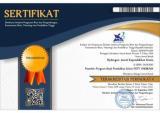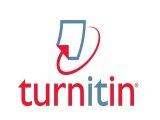Pengembangan Bahan Ajar Ikatan Kimia Model Inkuiri dengan Strategi Konflik Kognitif Terhadap Kemampuan Berpikir Kritis
Abstract
Chemical bonding was one of the subjects considered difficult by students, because it had submicroscopic concept that learns about the formation of bonds an element that was quite difficult for students to understand. The development of teaching material in the form of teaching materials was seen as a solution to this problem. This study aimed to develop chemical bondinginquiry modelsteaching materials with conflict cognitive strategies towards critical thinking skills. This studywas development research with ADDIE (Analysis, Design, Development, Implementation, and Evaluation)model design. The development results were validated by three expert validators, one practitioner validator and ten IKIP Mataram students as students' limited test validators. Quantitative data from the results of feasibility validation and the results of the assessment of student attitudes toward critical thinking skills were analyzed by percentage formula and the results of effectiveness test data were calculated by N-gain. Qualitative data in the form of responses and suggestions for improvement from the validator was used as a consideration to make revisions to the instructional materials developed. In general, the validator's assessment of the results of the development obtained an average percentage of 83.80%, 85.71%, 88% and 85.71%. While the results of the analysis of effectiveness using the N-gain test obtained an average score of 0.6 with the medium category and analysis. This showed that the teaching materials developed were very feasible to proceed to a broader and more effective stage to foster critical thinking skills.
Keywords
Full Text:
PDFReferences
Aclufi. 2005. Pengembangan Perangkat Pembelajaran Aljabar Menggunakan Problem Solving Dalam Problem Posing Berbasis Pendekatan Saintifik, Terhadap Pelajaran Matematika Dan Kemampuan Berpikir Kreatif Siswa SMA. Tesis. PPs-UNY.
Adriani, Duri, et al. 2017. Metode Penelitian. Tanggerang Selatan : Universitas Terbuka.
Depdiknas. 2008. Panduan Pengembangan Bahan Ajar. Departemen Pendidikan Nasional.
Dahlan, M. S. 2012. Pengembangan Bahan Ajar Berbasis Kontekstual pada Pokok Bahasan Asam Basa. Jurnal Riset dan Praktikum Kimia.
Ennis, R. H. 2011. Critical Thinking Assessment. College of education, The Ohio State University, 32 (3): 179-186.
Filsaime, D. K. 2008. Menguak Rahasia Berpikir Kritis dan Kreatif. Jakarta: Prestasi Pustaka.
Firdausichuuriyah, et al, 2017. Metode penilitian pendidikan. Bandung : CV Pustaka Setia.
Muhfahroyin. 2009. Memberdayakan Kemampuan Berpikir Kritis Siswa Melalui Pembelajaran Konstruktivistik. Jurnal Pendidikan Dan Pembelajaran, 16(1), 88–93.
Prastowo. 2014. Panduan Kreatif Membuat Bahan Ajar Inovatif. Yogyakarta:Diva Press.
Retno Dwi Suyanti. 2010. Strategi Pembelajaran Kimia. Yogyakarta: Graha Ilmu.
Sari, O.N. 2013. Implementasi Strategi Pembelajaran Inkuiri Terhadap Kemampuan Berpikir Kritis dan Pemahaman Konsep IPA Siswa SMP. e-Journal Program Pascasarjana Universitas Pendidikan Ganesha. 3.
Saptorini. 2011. Strategi Pembelajran Kimia. Semarang: Jurusan Kimia FMIPA UNNES.
Setyowati, A., Subali, B., dan Mosik. 2011. Implementasi pendekatan konflik kognitif dalam Pembelajaran fisika untuk menumbuhkan kemampuan berpikir Kritis siswa smp kelas VIII. Jurnal Pendidikan Fisika Indonesia 7: 89-96.
Sugiyono. 2010. Metode penelitian kuantitatif, kualitatif dan R & D. Bandung: Alfabeta.
Tursinawati, 2012, Penerapan Pembelajaran Inkuiri Terbimbing untuk Meningkatkan Pemahaman Hakikat Sains Siswa, Jurnal Pendidikan Serambi Ilmu 02: 48-58.
Trianto, 2007. Mode-model Pembelajaran Inovatif Berorientasi Kontruktivistik. Prestasi Pustaka: Jakarta.
DOI: https://doi.org/10.33394/hjkk.v7i1.1651
Refbacks
- There are currently no refbacks.

This work is licensed under a Creative Commons Attribution-ShareAlike 4.0 International License.





